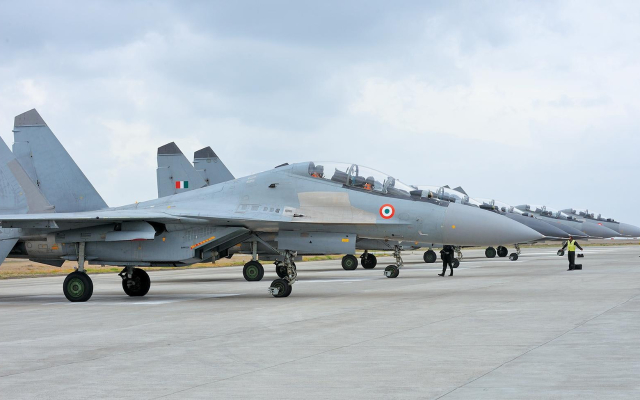
The Russia Ukraine War: Impact On IAF And Way Ahead

The current war between Russia and Ukraine which began in February 2022 has been continuing for more than a year now, with no signs of an end to hostilities. There has been a rigid and non-negotiable stand from both the warring sides and unsuccessful end to this conflict due to little or negligible effort from the world community. Though both sides had conflicts starting from 2014 onwards and there were early signs of the current situation, it was little expected that this war will escalate to the current level and continue for this long. The war has naturally affected both the countries, impacted life in Europe, affected the world economy and is giving rise to a new world order. Visit by the Chinese President to Russia and Western leaders to Ukraine, with both sides being reinforced with military hardware, are further making matters more complex and no early signs of end to this situation. Though a mighty military power, Russia is being stretched of all its resources, most important being the military hardware. Ukraine on the other side is severely affected with Russia targeting its military centres, industries and also collateral damage to civilian lives and property. Both sides have also lost a large number of military aircraft, armoured vehicles, other equipment and most importantly lives of soldiers, including few high-ranking military officers.
In this entire situation India has held a non-partisan and an independent stand, appealing both sides to come to the negotiating table and end the war. This stand has been maintained by India despite pressures from many countries. Prime Minister Narendra Modi clearly articulated his stand that, “Today’s era is not of war”, during his bilateral meeting with President Vladimir Putin on the side-lines of SCO meeting and later it was also adopted in the form of a joint declaration during the G-20 summit in Bali.
Leaving aside the geo-politics of this conflict, it needs to be seen that how this situation has and will be affecting India in the long run. The war has, naturally affected Indian armed forces, mainly the Indian Air Force, as its large inventory is of Russian origin and there is also dependence on Ukraine to certain extent. There was a recent declaration by the IAF to the Parliamentary Committee on Defence, that it is unable to expend current year’s allocation of capital funds due to non-supplies of ‘a major delivery’ from Russia. This statement was immediately grabbed and highlighted mainly by the Western media houses and replicated by certain Indian media [1,2,3,4] in many posts. The mainstream Indian media has not reported this statement however, highlighted that procurement of additional fighter jets for IAF should not be delayed [5,6,7]. In view of the current ongoing conflict between Russia and Ukraine, these news articles are creating concerns and need to be analysed to examine its effect on the capability and maintainability of the major assets of Indian Air Force, and way ahead for India to maintain the force levels.
For a holistic view of the situation and a comprehensive analysis, little peep into the historical perspective is necessary. Certain important issues are briefly mentioned below:
- The Indian Air Force came into being in 1932, and inherited the aircraft from the Royal Air Force in 1947. Majority of these aircraft were of western origin which included Westland Wapiti, Harvard, Hawker Hurricane, Spitfire, Lysander, B-24 Liberator, Lancaster, Tempest and Dakota.
- The later acquisitions in the fifties were Vampire, Dassault Mystere, Toofani and Canberra.
- In the aftermath of 1962 Chinese aggression, Caribou and Packet came as an emergency aid from the USAF, and Otter Hawker Hunter and Gnats were inducted in the sixties.
- The IAF also placed orders for expanding its transport fleet for An-12 and IL-14 transport aircraft and Mi-4 helicopters.
- In the same period HAL manufactured Avro transport aircraft, Gnats and indigenously designed Marut which were inducted in IAF. The Indian aircraft manufacturing industry which was coming of age, also started gathering momentum.
- India made a historic decision in 1962 when it signed protocols with the Soviet Union for supply of combat aircraft and missiles for the IAF. IAF’s first combat aircraft of non-western origin, the MiG-21 fighters were purchased from the Soviet Union, followed by procurement of SA-2 (Dvina) surface-to-air missiles. This was significant, as India looked towards Soviets for the first time and this association continues till date.
- In the 1971 war with Pakistan, Soviet Union stood in support of India and this support later manifested in licence manufacturing of MiG-21, followed by MiG-27 and induction of Mi-8 helicopters.
- Post the 1971 war, shortcomings in the air defence systems were bridged by large scale induction of Surface to Air Missile System SAM-3 ‘Pechora’ from Russia, which has been the mainstay of IAF’s air defence system for last 50 years. They were coupled with the Tropo communication systems procured from the US and a robust Air Defence and Ground Environment System (ADGES) was established. The system is presently under refurbishment and digitisation by Indian industry partners, which will give it a fresh lease of life and improved performance.
- In the interim decades, due to the cold war and other geopolitical reasons, US was also reluctant to provide military hardware and technology transfer to India.
- In the late seventies and eighties, IAF went for a modernisation drive with induction of deep strike Jaguar from UK, advanced fighters Mirage 2000 from France, MiG-29 from Russia, medium lift transports An-32, heavy airlift transport IL-76 and Mi-17 helicopters from the Soviet Union. This was beginning of inducting an inventory with mixed origins both from the west and the eastern bloc.
- The Soviet Union was also liberal in providing Transfer of Technology (ToT) for overhaul of SAM-3, Su-7, MiG-21, Mi-8, Mi-17, MiG-23, MiG-27, An-32 and their aeroengines. This developed a strong knowledge base, experience and developed the capability of IAF in undertaking MRO of these major weapon systems by its various Base Repair Depots (BRD).
- HAL also setup the manufacturing/MRO plant for the aeroengines of MiG-21, MiG-23, MiG-27, MiG-29 and Jaguar aircraft, with support from the OEMs and has developed enormous experience in this field.
- In the eighties, Indian aircraft manufacturing industry was seeing a tremendous growth in the form of licence manufacturing and also development of its Light Combat Aircraft (LCA) “Tejas’ and the Advanced Light Helicopter (ALH) ‘Dhruv’.
- After the disintegration of the Soviet Union in 1991, majority of weapon systems were affected due to disruption in supply chain of spares, as various plants were now in different countries, and many of them in Ukraine. This adversity was however, turned into an opportunity as large-scale indigenisation drive was initiated by the BRDs of IAF and HAL.
- The Nuclear tests by India in 1998 in Pokhran, resulted in sanctions from many countries including the USA. There were restrictions on Indian agencies for acquiring niche technologies and equipment. However, this was a blessing in disguise, with the Indian R&D agencies, trying to leapfrog and develop various indigenous systems on their own. Since then, there has been an upward growth in development of technologies for military use. Focus on ‘Self-Reliance’ has further provided boost to this effort.

After having a look into the past, there is a need to review the current updates on major fleets of IAF and their dependence on Russia as well as Ukraine.
- The MiG-21 fighters which were the mainstay of IAF, have been phased out with few squadrons of upgraded MiG-21 ‘Bison’, which also will be phased out by 2025.
- The multi role Su-30 fighters were inducted in IAF in the nineties, initially on lease and later manufactured in India as the Su-30 MKI. HAL is the licence partner to manufacture the aircraft and its aeroengine in India. It has now achieved the capability to manufacture the aircraft and its components from raw material stage [8]. However, there is dependence on Russia for certain material, components and spares of the aircraft and those for its aeroengine.
- In the later part of 2000, two major upgrades were initiated for An-32 and for MiG-29. The upgrade of An-32 which is the workhorse of IAF for its medium lift tasks, included life revision and change over to modern avionics, many of them of western origin. The program was affected and delayed due to the Crimea crisis in 2014 [9]. The current crisis has also affected support from Ukraine however, 1 BRD of IAF has been able to upgrade majority of the fleet and life revision is being undertaken with inhouse capabilities of IAF. The An-32 is also to be replaced in future by C-295 medium lift transport, to be manufactured in India by Tata-Airbus consortium.
- The MiG-29 Upgrade involving change in avionics, weapon systems, capability for air-to-air refuelling and life revision, also initiated in the same period has been completed. The life of the MiG-29 UPG is planned to be further revised by IAF without any further Russian support by 11 BRD [10]. Though the spares required for its routine maintenance have been completely indigenised by IAF, there is a dependence on Russia for certain upgraded systems.
- The RD-33 for the MiG-29 and AL-31 FP aeroengines for the Su-30 MKI are overhauled by HAL and there is a similar dependence for major components on Russia. However, many spares used in overhaul are indigenously manufactured.
- The Motor Sich repair plant for An-32 aeroengines (AI-20) is in Zaporizhzhia, which is also home to the nuclear plant and is presently a major centre of concern due to Russian occupation. Since these engines are overhauled by IAF, there is no immediate issue, though there is dependence on the OEM for major components.
- The major overhaul and repairs for IL-76 and its aeroengines is undertaken at Russia. The Airborne Warning and Control System (AWACS) and Air to Air Refuellers are also of IL-76 platform. Since the arising of major overhaul is not too frequent, there is no immediate concern. Capabilities have been developed by the BRDs, for undertaking repairs of certain components, whenever required.
- Amongst the helicopter fleets, the Mi-17V5 was inducted in 2012 and is the most modern and latest. It will be the mainstay for the vertical lift capability of IAF. The IAF has complete maintenance facility for different variants of Mi-17 and its aeroengines at 3 BRD. Overhaul of the latest Mi-17V5 helicopter was undertaken with inhouse capability of IAF, and the line has been established. It is also planned to outsource the overhaul to private partners considering the large fleet strength of Mi-17, Mi-17IV and Mi-17V5 and requirement for indigenisation of large number of components for them [11].
- For many upgrade projects and various systems, Israel has partnered with India. These include the Airborne Warning and Control System (AWACS) with IL-76 of Russian origin as the platform, MiG-29 UPG, and various weapons, missiles and EW systems.
- The indigenously developed LCA ‘Tejas’ by Aeronautical Development Agency (ADA) and under manufacture by HAL has been inducted by IAF however, there are delays to its first order of 40 Mk1 variants [5]. There is also an order of 73 Mk1 A and 10 trainer aircraft, and IAF plans to acquire Tejas T Mk-2, which is currently under development. The total requirement will be around 300 aircraft.
- The Su-30 MKI, which is in largest numbers, is planned for upgrade with many indigenous systems. The program is called ‘Super Su-30’ which is under consideration and revision, due to Russia’s engagement in the war [12].
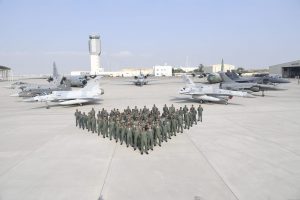
- The IAF has a plan for fulfilling the deficiency of the required number of fighter squadrons. Around 500 aircraft are planned as majority of the present aircraft will be completing their life and need replacement. Apart from the indigenous LCA, procurement of 114 Multi Role Fighter Aircraft (MRFA) and under development Advanced Medium Combat Aircraft (AMCA) are expected to fill the deficiencies [13,14].
- India has made significant progress in its missile program and is amongst four nations to have developed Anti-Ballistic Missile (ABM) and one amongst seven countries to have developed the Inter-Continental Ballistic Missile (ICBM) systems. Number of missile variants with different capabilities, to be launched from different platforms have been and are under development for all the three services. For the air defence of Indian airspace, IAF currently has short range ‘Pechora’ missile system. The indigenous ‘Akash’ made by Bharat Dynamics Limited with a range of 50-60 km is being inducted by Army and IAF [16]. The Medium Range Surface to Air Missile Systems (MRSAM) with a range of 70 km is being jointly developed by DRDO and Israeli Aircraft Industry (IAI), and under induction by all the three services [17]. The trials for man portable and launched Very Short Range Air Defence System (VSHORADS) were successfully undertaken recently. As reported, further supplies of S-400 ‘Triumph’ Air Defence Missile System from Russia is getting delayed and will affect the intermediate range air defence capability. The procurement was to the dislike of USA and much to the worry of our adversaries.
As we look into the past history of IAF and the capability development of India in aircraft manufacturing industry, following issues emerge.
- In the initial years post-independence, the dependence for major inventory of IAF was on the West, which shifted to Russia and later aircraft from different countries were also acquired.
- We have been dependent on foreign countries for too long and been majorly dependent on erstwhile USSR and now Russia for our defence needs. Undoubtedly, Russia has been India’s trusted partner for long and also supported our quest for aircraft and aeroengines manufacturing. USA has been reluctant to transfer the technology and now eager to partner with India. Unfortunately, the R&D and our only aircraft manufacturer, could not keep pace and the gap between the foreign support and indigenous capability is yet to be bridged.
- Notwithstanding the above, significant capability has been attained by both HAL and the BRDs of IAF for maintaining and sustaining the available assets. Many inhouse technological studies have resulted in life revision and upgrades of major platforms and weapon systems. In the past, adversities and difficulties were utilised to our advantage, and the present situation is no different.
- As the licenced manufacturer and with ToT to HAL and BRDs of IAF, India has adequate experience in manufacturing, Maintenance, Repair and Overhaul (MRO), modifications and upgrade of aircraft. This capability can be further leveraged to improve self-reliance and handholding of the private industry in undertaking manufacture and MRO tasks, by sharing the experience and knowledge.
- Disruptions in product support and supply chain caused due to various issues some due to geopolitical reasons and wars, have been successfully managed and overcome, due to indigenisation efforts. However, the dependency on foreign OEMs could never be negated as the major equipment was designed and manufactured by them. One of the major drawbacks has been non-availability of special raw materials in India. Indigenisation of spares for foreign equipment can only help to sustain but cannot be a permanent solution.
- There has been an impetus to ‘Self Reliance’ in the recent times. This shift in approach and policy has encouraged private industry to participate in major programs. Firms like Tata, Larsen & Toubro, Adani, Reliance, Mahindra, Kalyani and various others have formed separate defence and aerospace verticals, which have developed significant capabilities. Foundation stones for manufacture of the first transport aircraft (C-295) in India and the first Helicopter factory in Tumkur near Bangalore have been recently laid and will strengthen the aircraft manufacturing capability.
- For most of the aircraft manufacturers in the world, there is interdependence, for manufacture and utilisation of components sourced from different countries. Many systems are integration of components from different origins.
- Hence, complete indigenous manufacture of major equipment such as aircraft or aeroengine, with nil support from foreign countries is not a near reality, as there will be dependence on materials, systems, components and various Line Replaceable Units (LRU). As developing capabilities for each component and system is not immediately practicable, indigenous content can only be gradually improved. Collaborations and partnership with different OEMs of the world is the way ahead.
The war between Russia and Ukraine is probably the biggest crisis after WW2. It is visible that the war has affected many countries including India, as there is interdependence for trade, energy, fuel, food and also defence hardware. Many news articles, especially from the western media have highlighted concerns on the capability of IAF being affected due to non-supplies of major defence equipment, specifically the S-400 surface to air defence system, and two of its major aircraft fleets namely the MiG-29 and Su-30 MKI. In spite of the war, the manufacturers and repair agencies in both the countries are trying to provide support for the requirements of IAF, though the situation may not be ideal. As most of the factories are in the hinterland of Russia and even at Kiev in Ukraine, the supply chain is not totally stopped. The situation may be of concern, but not alarming.
As seen in the historical background, this is not the first time India has been affected. There are sure signs of mounting pressure by vested and commercial interests by defence suppliers. These should not trouble us, as there have been many situations earlier when the supply chains were disrupted. The industrial eco system, capability of HAL and IAF’s own ingenuity has helped it survive the crisis earlier and can surely make it tide over in the current situation. The role of Indian private industry is important in this situation.
Various aircraft fleets and weapon systems need support from Russia in the immediate and medium term, as long as they remain operational with IAF and till we have complete indigenous capability. While IAF continues to dialogue with the manufacturers in Russia, diplomatic efforts and government level dialogues will facilitate long term support. The long association and trusted partnership between India and Russia, provides a favourable environment in this regard.
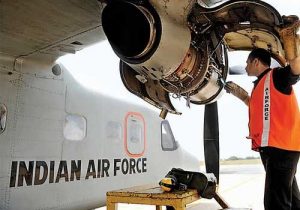
The current situation has once again highlighted and reemphasised the need to be independent for our defence requirements. The widening gap of technology and assets availability needs to be bridged, without further delays. The production rate of LCA needs to be enhanced and other projects for development of other aircraft and weapon systems need to be kept on track. Procurement cases of aircraft and other systems should be pursued and fast tracked, so that the force levels are maintained and operational capability of IAF to keep the Indian skies safe is not compromised.
An early end to this war is definitely desirable in every country’s interest.
*******************************************************************************************************************
References:
- “Russia can’t meet India’s arms deliveries due to Ukraine war, Indian Air Force says”, by Rhea Mogul, CNN, Friday March 24, 2023, https://edition.cnn.com/2023/03/24/india/india-russia-arms-delivery-ukraine-war-intl-hnk/index.html.
- “Ukraine War Could Impact S-400 Delivery To India; IAF Issued Indigenization List Of 600 Items Used In Russian-Origin Platforms”, by Sakshi Tiwari, March 25, 2023, https://eurasiantimes.com/ukraine-war-could-impact-s-400-delivery-to-india- iaf/.
- “Russia cannot meet arms delivery commitments because of war, Indian Air Force says”, by Krishn Kaushik, March 23, 2023, Reuters, https://www.reuters.com/world/india/russia-cannot-meet-arms-delivery-commitments-because-war-indian-air-force-says-2023-03-23/ and the Print, https://theprint.in/india/russia-cannot-meet-arms-delivery-commitments-because-of-war-indian-air-force-says/1467155/.
- “Russia falls short of delivering arms to India amid Ukraine war, informs IAF”, Livemint, 26 March 2023, https://www.livemint.com/news/india/russia-falls-short-of-delivering-arms-to-india-amid-ukraine-war-11679822929891.html
- Why delay fighter jets for IAF, says the Parliamentary Committee on Defence”, by Manish Kumar Jha, March 22, 2023, https://www.financialexpress.com/defence/why-delay-the-fighter-jets-for-the-iaf-says-the-parliamentary-committee-on-defence/3019056/
- “Parliamentary Panel Says Procurement of Fighter Jets Should Not Be Delayed by The Wire Staff, The Wire, 22 March 2023, https://thewire.in/government/parliamentary-panel-fighter-jets-iaf-navy.
- “Procurement of fighter jets must not be delayed: Parliamentary committee”, by Ajay Banerjee, The Tribune, March 21, https://www.tribuneindia.com/news/nation/procurement-of-fighter-jets-must-not-be-delayed-parl-committee-490135
- “HAL completes production of 140 raw material stage Su-30MKI aircraft”, Air Force Technology, 19 March 2021, https://www.airforce-technology.com/news/hal-140-raw-material-stage-su-30mki/.
- “Ukrainian delegation visit to speed up stalled An-32 upgrade programme”, by Sandip Unnithan, India Today, 07 June 2019, https://www.indiatoday.in/india/story/ukranian-delegation-india-visits-an32-upgrade-programme-ste-iaf-1544628-2019-06-07.
- “IAF mulls second life extension for MiG-29 fighters to enhance service span from 40 years to 50 years”, by Vijay Mohan, The Tribune, 16 Oct 22, https://www.tribuneindia.com/news/nation/iaf-mulls-second-life-extension-for-mig-29-fighters-to-enhance-service-span-from-40-years-to-50-years-441845.
- “IAF to outsource overhaul of Mi-17 helicopters to private industry in view of limited in-house capacity”, Vijay Mohan, The Tribune, 16 March 2022, https://www.tribuneindia.com/news/nation/iaf-to-outsource-overhaul-of-mi-17-helicopters-to-private-industry-in-view-of-limited-in-house-capacity-378340.
- “India to modernize Sukhoi Su-30MKI fighter fleet with $4 billion program”, by Valius Venckunas, Aerotime Hub, 26 Jan 2023, https://www.aerotime.aero/articles/india-to-modernize-sukhoi-su-30mki-fighter-fleet-with-4-billion-program.
- “Indian Air Force will have 35 -36 combat squadrons by mid 2030s says IAF Chief”, byHuma Siddiqui, Financial Express, October 6, 2022, https://www.financialexpress.com/defence/indian-air-force-will-have-35-36-combat-squadrons-by-mid-2030s-says-iaf-chief/2701254/.
- “IAF’s acquisition of 114 fighter jets to be part of a major procurement plan, by Dinakar Peri, February 16, 2023, The Hindu, https://www.thehindu.com/news/national/iafs-114-fighter-tender-to-move-in-3-4-months-part-of-over-500-jet procurement/article66516620.ece.
- “Full List Of India’s Air Defence Systems, by Sheershoo Deb August 23, 2020”, https://www.defencexp.com/full-list-of-indian-air-defence-systems/.
- “From Brahmos To Akash: Inside The World Of India’s Most Advanced And Lethal Missiles” by Anuj Tiwari, Dec 21, 2022, India Times, https://www.indiatimes.com/trending/social-relevance/brahmos-to-akash-here-is-indian-missile-list-588110.html.
- “India showcases military prowess with successful MRSAM firing test”, Livemint, 07 Mar 2023, https://www.livemint.com/news/india-showcases-military-prowess-with-successful-mrsam-firing-test-11678163413221.html.
Disclaimer
The opinions expressed in this article are the author’s own and do not reflect the views of Chanakya Forum. All information provided in this article including timeliness, completeness, accuracy, suitability or validity of information referenced therein, is the sole responsibility of the author. www.chanakyaforum.com does not assume any responsibility for the same.
Chanakya Forum is now on . Click here to join our channel (@ChanakyaForum) and stay updated with the latest headlines and articles.
Important
We work round the clock to bring you the finest articles and updates from around the world. There is a team that works tirelessly to ensure that you have a seamless reading experience. But all this costs money. Please support us so that we keep doing what we do best. Happy Reading
Support Us









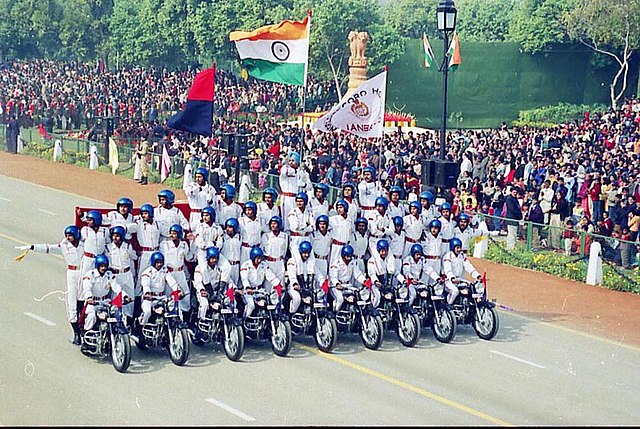

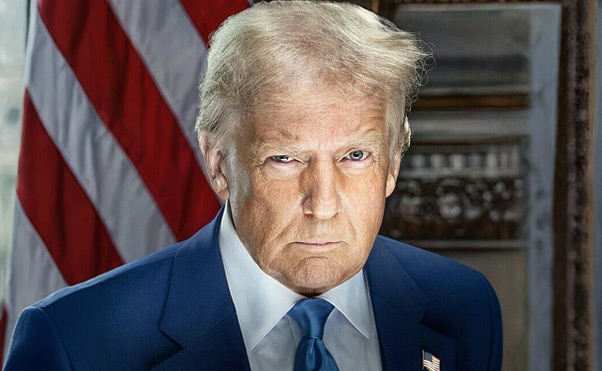



POST COMMENTS (2)
Wg Cdr U P Joglekar (retd)
Rakesh Yadav